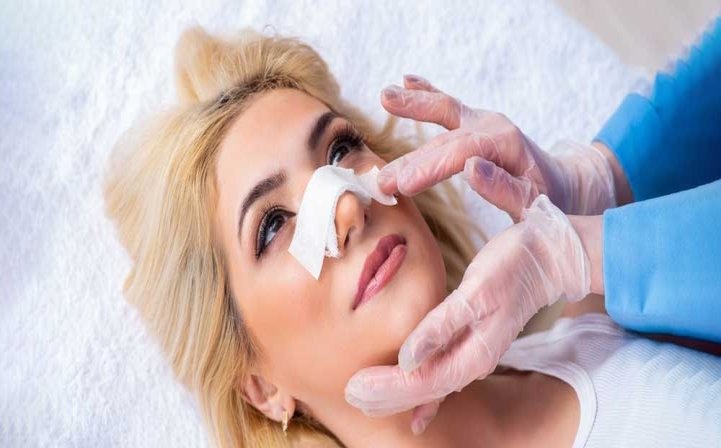The pursuit of beauty is deeply rooted in human history, with various cultures establishing diverse standards of attractiveness. One aspect that consistently emerges across cultures is the significance of facial symmetry in shaping perceptions of beauty. This article delves into the psychology of facial symmetry and its connection to perceived beauty, examining how rhinoplasty serves as a tool to address perceived facial imbalances and enhance overall facial harmony.
The Importance of Facial Symmetry
Facial symmetry, the degree to which the two sides of a face mirror each other, has long been associated with attractiveness. Research in psychology suggests that symmetrical faces are perceived as more beautiful, and individuals tend to find such faces more appealing and trustworthy. This preference for symmetry is believed to be rooted in evolutionary psychology, as it may signal good genetic health and developmental stability.
Evolutionary Roots of Facial Attractiveness:
- Facial symmetry is often considered a marker of genetic fitness. Evolutionary psychologists propose that individuals with more symmetrical faces may have experienced fewer genetic and environmental disturbances during development, making them more desirable mates. As a result, the preference for symmetrical faces may be ingrained in human psychology.
Cultural Universality and Variability:
- While the preference for facial symmetry appears to be cross-cultural, the specific standards of beauty can vary widely. Different cultures may emphasize certain facial features, and the degree of importance placed on symmetry can differ. This cultural variability adds complexity to the psychology of facial beauty, as it intersects with individual and societal perceptions.
The Role of Rhinoplasty in Addressing Imbalances
Rhinoplasty, commonly known as a “nose job,” is a surgical procedure that reshapes the nose to improve its appearance or functionality. Beyond addressing functional concerns, rhinoplasty is frequently sought to enhance facial aesthetics by creating a more balanced and harmonious facial profile.
Rhinoplasty for Facial Harmony:
- The nose, positioned prominently at the center of the face, plays a crucial role in facial aesthetics. A nose that is disproportionate or misshapen can disrupt overall facial harmony. Rhinoplasty offers individuals the opportunity to address perceived imbalances by reshaping the nose to better align with their desired facial aesthetics.
Psychological Impact of Nasal Appearance:
- The psychological impact of nasal appearance extends beyond physical attributes. Individuals dissatisfied with their noses may experience self-consciousness, reduced self-esteem, and heightened social anxiety. Rhinoplasty, as a cosmetic intervention, aims to alleviate these psychological concerns by providing individuals with a means to enhance their facial features in alignment with their perceived ideals of beauty.
Personal Empowerment Through Rhinoplasty:
- Seeking rhinoplasty is a personal choice often driven by an individual’s desire for self-improvement. The decision to undergo the procedure can empower individuals to take control of their appearance and enhance their self-confidence. Rhinoplasty can be a transformative experience, helping individuals align their outer appearance with their inner sense of identity.
Psychological Considerations in Rhinoplasty
Body Dysmorphic Disorder (BDD):
- It is essential to acknowledge the psychological aspects surrounding rhinoplasty, particularly in cases where individuals may be suffering from Body Dysmorphic Disorder (BDD). BDD involves an obsessive focus on perceived flaws in physical appearance, and individuals with this disorder may seek multiple cosmetic procedures. Ethical practitioners must carefully assess patients to ensure that rhinoplasty is a suitable intervention.
Consultation and Communication:
- Effective communication between the patient and the surgeon is crucial in rhinoplasty. A thorough consultation helps uncover the patient’s motivations, expectations, and concerns. Surgeons play a pivotal role in managing realistic expectations and ensuring that rhinoplasty is approached with a focus on enhancing overall facial harmony, rather than conforming to unrealistic standards.
The psychology of facial symmetry and beauty reveals the intricate relationship between human perception and aesthetic ideals. As individuals navigate the complexities of societal expectations and personal preferences, rhinoplasty emerges as a valuable tool for addressing perceived facial imbalances and enhancing overall facial harmony. Understanding the psychological motivations behind the desire for facial symmetry allows for a more compassionate and holistic approach to cosmetic interventions. Ultimately, the journey towards achieving facial aesthetics reflects the deeply ingrained human pursuit of self-expression, empowerment, and a sense of inner and outer harmony.



